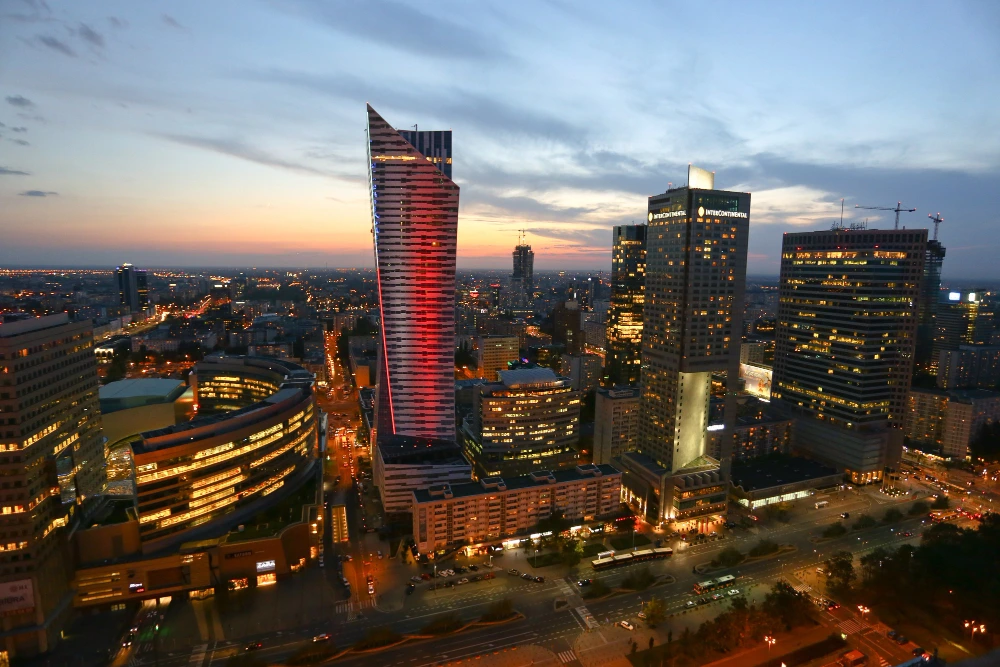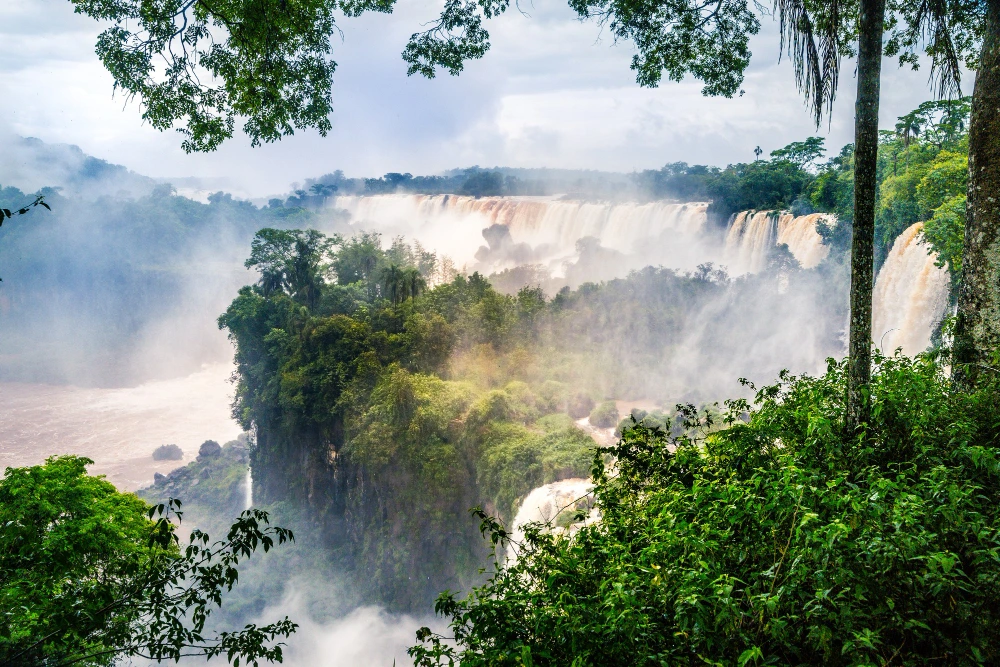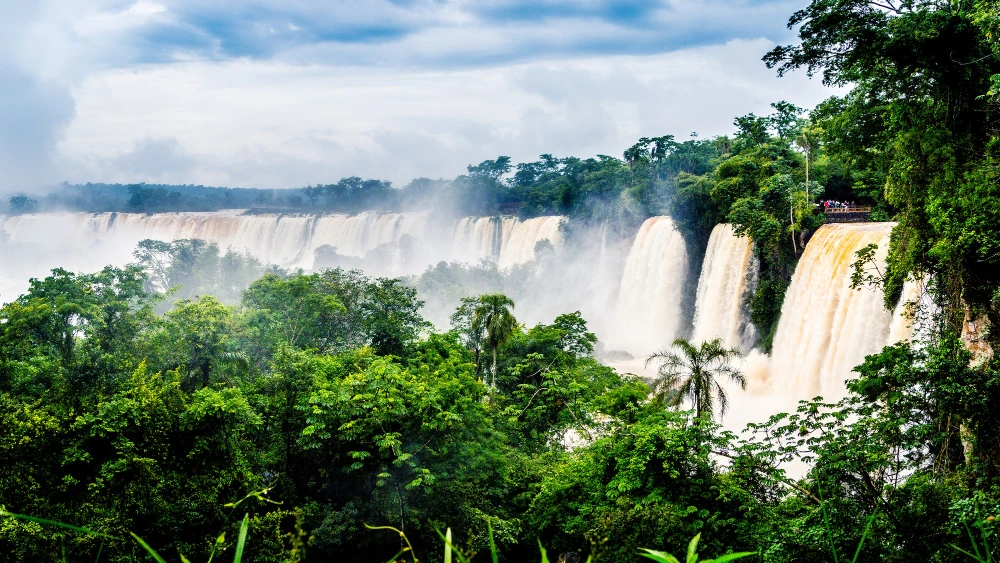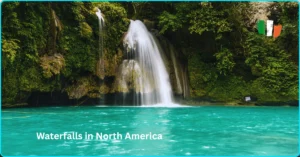Picture this: You’re standing in Buenos Aires Iguazu Falls, sipping mate on a Sunday morning. Then someone mentions Iguazu Falls. Your heart skips a beat. Can you really visit Iguazu Falls from Buenos Aires? The answer is absolutely yes!
Iguazu Falls stands as one of South America’s crown jewels. This UNESCO World Heritage Site boasts 275 cascading waterfalls. The falls stretch across Argentina and Brazil. Many travelers wonder if they can make this journey from Argentina’s bustling capital.
This guide shares everything you need to know. We’ll cover transportation options, planning tips, and personal insights. By the end, you’ll feel confident planning your trip to Iguazu Falls.

Getting from Buenos Aires to Iguazu Falls: Your Transportation Options
The journey from Buenos Aires to Iguazu takes 1.5 hours by air or 18 hours by bus. Let’s explore each option so you can pick what works best for your schedule and budget.
Flying from Buenos Aires to Iguazu (Recommended)
Flying is hands down the best way to travel from Buenos Aires to Iguazu. The flight takes just 1.5 to 2 hours. You’ll land at Cataratas del Iguazú International Airport in Puerto Iguazu.
Airlines like Aerolíneas Argentinas and JetSmart operate daily flights. Book early for better prices. Morning flights often cost less than afternoon ones. Expect to pay between $100-300 USD depending on the season.
Airport transfers are simple. Buses run every 30 minutes to Puerto Iguazu town center. The ride takes 20 minutes and costs around $5 USD. Taxis are faster but pricier at $15-20 USD.
Book flights at least 4 weeks ahead. Prices jump during peak season (December-March).
Bus Journey from Buenos Aires Iguazu Falls
The bus from Buenos Aires to Iguazu is an adventure in itself. Companies like Via Bariloche and Crucero del Norte offer overnight services. The journey takes 18 to 20 hours.
Bus travel saves money but costs time. Tickets range from $40-80 USD. The most comfortable option is “cama ejecutivo” with reclining seats. You’ll get meals and stops along the way.
Night buses work well for budget travelers. You save on one hotel night. The scenery through northern Argentina is stunning. Rolling hills and vast plains stretch for miles.
Bus travel suits patient travelers who enjoy the journey as much as the destination.
Is Driving from Buenos Aires to Iguazu Worth It?
Driving from Buenos Aires to Iguazu covers 1,300 kilometers. The journey takes 12-14 hours of pure driving time. Most people split this into two days with an overnight stop.
Rental cars cost $30-50 USD per day plus fuel. Expect to spend $150-200 USD on gas. Tolls add another $30-40 USD to your budget. Highway hotels charge $40-60 USD per night.
The drive offers incredible flexibility. You can stop at small towns like Posadas or Resistencia. Rural Argentina shows its authentic face along this route. Endless farmland and friendly locals make memorable stops.
Stick to main highways and avoid driving at night outside cities.
Calculate Travel Time & Distance Buenos Aires Iguazu Falls
Buenos Aires → Iguazu Falls Calculator

Planning Your Visit to Iguazu Falls
Both sides of Iguazu Falls offer unique experiences – Argentina provides close-up views while Brazil offers panoramic perspectives. Planning which side to visit depends on your time and interests.
Argentinian Side vs Brazilian Side: Which to Choose?
The Argentinian side of the falls gets you up close and personal. Walking trails wind through the jungle. You’ll feel the mist on your face at Devil’s Throat viewpoint. This side takes a full day to explore properly.
Iguazu National Park on the Argentine side has three main trails. The Upper Circuit shows falls from above. The Lower Circuit brings you to the base. The Devil’s Throat trail leads to the most spectacular viewpoint.
The Brazilian side offers breathtaking panoramic views. One main trail provides stunning photo opportunities. You see the full scope of the falls from this angle. This side takes half a day to visit.
Bring your passport. The crossing takes 30-45 minutes each way. Buses run between both sides regularly.
Day Trip vs Extended Stay: What I Recommend
Can you do a day trip to Iguazu from Buenos Aires? Technically, yes. Early morning flights get you there by 10 AM. Late evening flights bring you back to Buenos Aires by 11 PM.
However, rushing through Iguazu Falls feels like a crime. The park deserves at least two full days. This allows time for both sides plus wildlife watching. You’ll appreciate the slower pace after Buenos Aires’ hustle.
Recommended itinerary: Fly out Friday morning, return Sunday evening. This gives you Saturday for the Argentinian side and Sunday morning for Brazil.
Puerto Iguazu offers excellent accommodation options. Budget hostels start at $15 USD per night. Mid-range hotels charge $50-80 USD. Luxury options like Das Cataratas Hotel cost $200+ USD but sit inside the park.

What Makes Iguazu Falls Special: A Personal Perspective
Iguazu Falls combines raw power with delicate beauty across 275 individual waterfalls. Standing before this natural wonder changes your perspective on nature’s capabilities.
The Power and Beauty of 275 Waterfalls
The thunderous roar hits you first. Then comes the mist rising like nature’s own air conditioning. The sheer scale takes your breath away. Water cascades from multiple levels creating a symphony of sound.
Devil’s Throat stands as the most impressive single drop. Water plunges 80 meters into a horseshoe-shaped chasm. The force creates a permanent rainbow in the mist. Early morning light makes the colors dance.
Bring a waterproof camera case. The mist will soak everything near the main viewpoints.
Iguazu dwarfs other famous waterfalls. Niagara Falls looks tiny in comparison. Victoria Falls has power but lacks the breadth. Iguazu offers both scale and intimacy in one package.
Wildlife and Nature Experience
Iguazu National Park protects incredible biodiversity. Over 400 bird species call this jungle home. Colorful toucans pose for photos along the trails. Butterflies in electric blue flutter between flowers.
Coatis roam freely throughout the park. These raccoon-like creatures beg for food but don’t feed them. It’s against park rules and harmful to their health. They’re entertaining enough to watch naturally.
Best viewing time: Visit early in the morning for active wildlife. Animals seek shade during midday heat.
The park’s UNESCO World Heritage Site status protects this ecosystem. Subtropical rainforest surrounds the falls. Ancient trees tower overhead creating natural cathedrals. The conservation work here deserves applause.

Practical Tips for Your Buenos Aires to Iguazu Journey
The best time to visit Iguazu Falls is during fall and spring when weather is mild and crowds are smaller. However, each season offers unique advantages for different types of travelers.
Best Time to Visit Iguazu Falls
Spring (September-November) brings perfect weather. Temperatures hover around 25°C (77°F). Rainfall is moderate keeping the falls full. Crowds remain manageable outside school holidays.
Summer (December-March) is peak season. Expect hot, humid weather and afternoon thunderstorms. This is also the busiest time. Book accommodations well in advance. The falls flow at maximum volume.
Fall (March-May) offers ideal conditions. Weather cools down from summer heat. Tourist numbers drop significantly. Hotel prices become more reasonable. Morning visits are particularly pleasant.
Winter (June-August) sees fewer crowds and lower prices. Weather stays mild around 20°C (68°F). Some days might be cloudy but rarely cold. This is budget travelers’ favorite season.
Bring waterproof clothing regardless of season. The falls create their own weather system.
Park Entrance and Navigation Tips
Park entrance costs $25 USD for foreigners and includes unlimited train rides within the park. The ticket office opens at 8 AM and closes at 6 PM.
Buy tickets online to skip lines during busy periods. The park entrance accepts credit cards and US dollars. Keep your ticket – you’ll need it for the train system.
The Ecological Jungle Train runs every 30 minutes. Three stations serve different trail areas. Central Station connects to Upper and Lower Circuits. Cataratas Station leads to Devil’s Throat.
Trail difficulty varies from easy walks to moderate hikes. Most paths are paved or boardwalked. The Devil’s Throat trail is fully accessible. Wear comfortable walking shoes with good grip.
Time management: Allow 6-8 hours for the Argentinian side. The Brazilian side needs 3-4 hours maximum.
Where to Stay: Puerto Iguazu vs Das Cataratas
Puerto Iguazu town offers the most accommodation choices. Budget hostels, mid-range hotels, and vacation rentals line the streets. The town center buzzes with restaurants and souvenir shops.
Das Cataratas Hotel sits inside Iguazu National Park. This luxury option costs more but offers exclusive access. Guests can visit the falls before opening hours. Evening walks to Devil’s Throat are possible.
Budget option: Stay in Puerto Iguazu for variety and value. The 20-minute bus ride to the park isn’t a big deal.
Luxury choice: Das Cataratas justifies the expense for special occasions. Waking up to jungle sounds beats any city hotel.
Local dining ranges from pizza joints to traditional Argentine steakhouses. Try surubí, a local river fish. Empanadas make perfect trail snacks. Most restaurants accept credit cards.

Sample Itineraries Based on Personal Experience
A 2-day trip allows you to experience both sides of Iguazu Falls without rushing. Here are proven itineraries that maximize your time and enjoyment.
2-Day Buenos Aires to Iguazu Trip
Day 1: Catch the 8 AM flight from Buenos Aires. Land in Puerto Iguazu by 10 AM. Take the airport bus to your hotel. Check in and grab lunch.
Head to Iguazu National Park by 2 PM. Start with the Upper Circuit for overview shots. The Lower Circuit brings you closer to individual falls. End at Devil’s Throat for sunset views.
Return to Puerto Iguazu for dinner. Try a local restaurant like Aqva or El Quincho del Tío Querido. Rest well – tomorrow brings more adventures.
Day 2: Wake early for the Brazilian side. Border crossing takes 45 minutes. The panoramic trail offers incredible photo opportunities.
Return to Argentina by lunch. Fly back to Buenos Aires on the 6 PM flight. You’ll be home by 8 PM with memories to last forever.
3-Day Extended Iguazu Experience
Day 1: Follow the same arrival plan. Explore the Upper Circuit thoroughly. Take the boat ride to San Martin Island if water levels allow.
Day 2: Visit the Brazilian side in the morning. Return for the Lower Circuit in Argentina. Book the Macuco Safari boat ride for an adrenaline rush.
Day 3: Rise early for a nature walk in the park. Visit any missed trails. Explore Puerto Iguazu town. Shop for souvenirs before your evening flight.
Hidden gem: Ask locals about the Sendero Verde trail. This lesser-known path offers peaceful jungle walks away from crowds.
Conclusion
Visiting Iguazu Falls from Buenos Aires ranks among South America’s most rewarding journeys. The UNESCO World Heritage Site delivers natural drama that photos can’t capture. Whether you choose a quick day trip or extended stay, the falls will leave lasting impressions.
The journey itself becomes part of the adventure. Quick flights get you there fast. Scenic bus rides show Argentina’s countryside. Each transportation option offers unique benefits.
My recommendation: Spend at least two days experiencing both sides of the falls. The Argentinian side brings you close to the action. The Brazilian side provides stunning panoramic views. Together, they create the complete Iguazu experience.
Don’t let distance discourage you. Buenos Aires and Iguazu Falls connect easily through multiple daily flights. This natural wonder deserves a spot on every South American itinerary. Book your trip today and prepare for nature’s most spectacular show.
Frequently Asked Questions
Can you visit Iguazu Falls from Buenos Aires in one day?
Yes, but it’s rushed. Morning flights arrive by 10 AM and evening flights depart after 6 PM. This leaves 6-7 hours for sightseeing. You’ll see the highlights but miss the peaceful moments.
How long is the flight from Buenos Aires to Iguazu Falls?
Direct flights take 1.5 to 2 hours. Add 30 minutes for airport transfers on each end. Total travel time is about 3 hours door-to-door.
What is special about the Iguazu Falls?
Iguazu Falls combines massive scale with intimate beauty. 275 waterfalls create a natural amphitheater. The UNESCO World Heritage Site protects unique biodiversity. It’s nature’s ultimate performance.
Is it worth driving from Buenos Aires to Iguazu Falls?
Driving works for road trip enthusiasts with extra time. The 1,300km journey shows authentic Argentina. Most travelers prefer flying for convenience and time savings.
Do I need a visa to visit both sides of Iguazu Falls?
Most tourists don’t need visas for short visits. US, EU, and many other passport holders can cross freely. Check current requirements as policies change.
What’s the best way to travel from Buenos Aires to Iguazu?
Flying is fastest and most convenient. Buses save money but take 18 hours. Choose based on your budget and schedule priorities.
How much does a trip to Iguazu Falls cost from Buenos Aires?
Budget travelers spend $200-300 for 2 days including flights. Mid-range trips cost $400-600. Luxury experiences start at $800+ per person.
Can you see Iguazu Falls without entering the park?
Not really. The best viewpoints require park entrance. Some distant views exist from helicopter tours, but you’ll miss the full experience.










